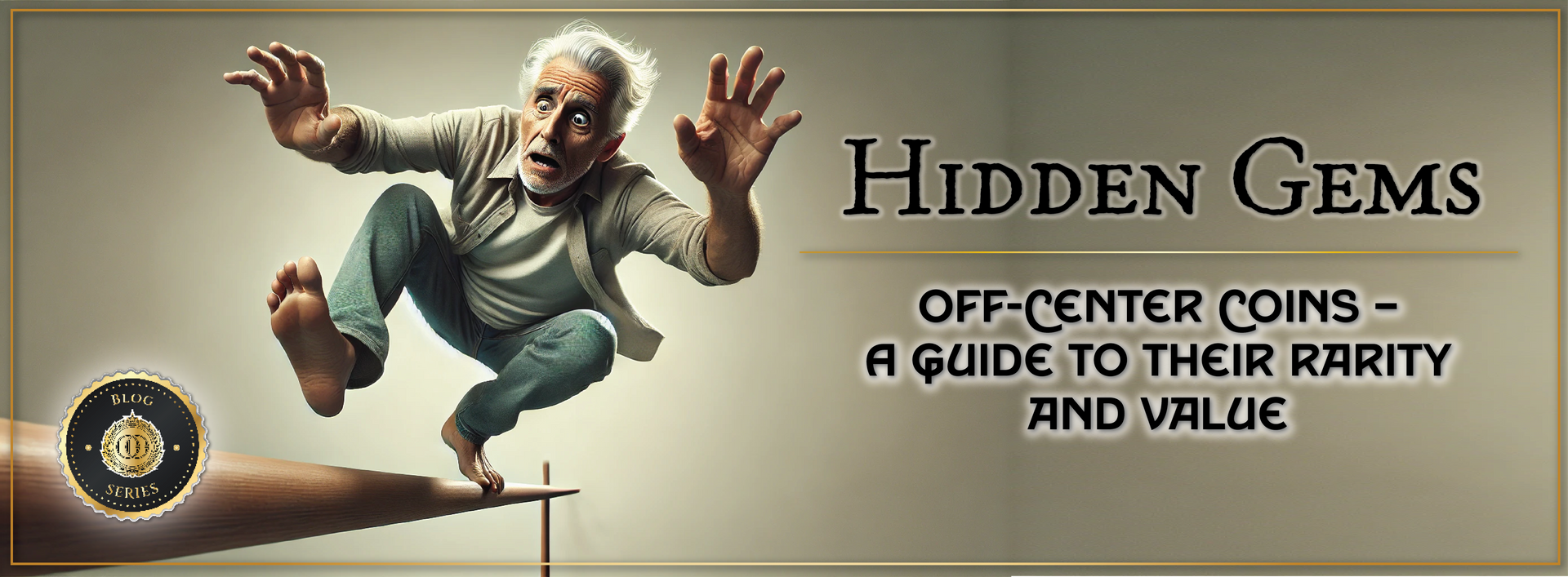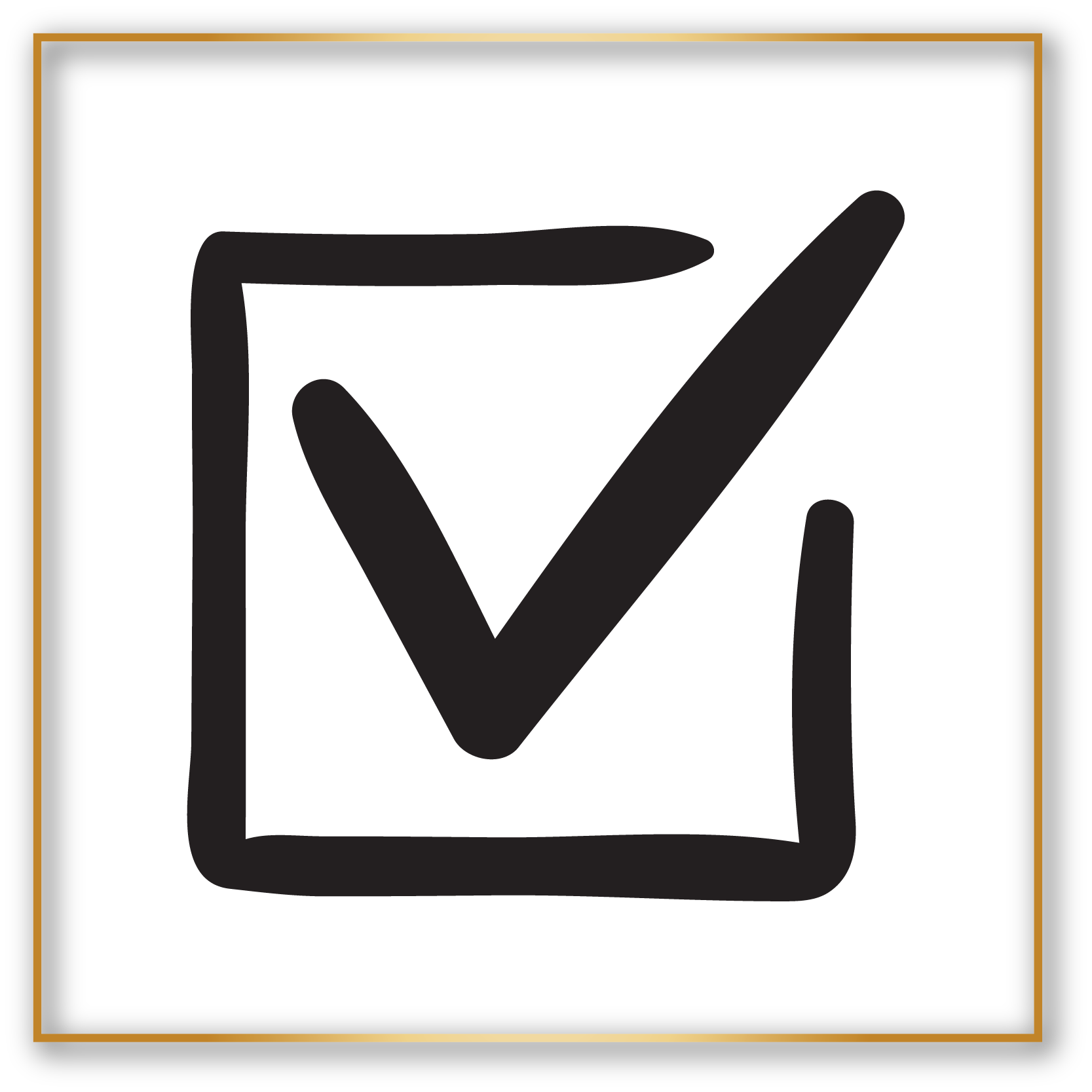Ready to start your search? Grab your Error Coin checklist here!

In the fascinating world of numismatics, error coins have become prized treasures for collectors. One of the most intriguing and easily recognizable errors is the off-center coin. These coins, with their distinct misalignment, are captivating to collectors not only for their rarity but for their visual uniqueness. In this guide, we’ll explore the value, rarity, and history behind off-center coins, and why they deserve a place in your collection.
What Is an Off-Center Coin?
An off-center coin occurs when a coin is struck outside of its intended alignment. This happens when the coin blank (planchet) is not correctly positioned in the coining press, resulting in part of the design being missing. The extent of the misalignment can vary from slightly off-center to dramatic shifts where a significant portion of the coin’s design is missing.
Off-center errors are among the most noticeable minting mistakes, and the more misaligned the design, the rarer—and potentially more valuable—the coin.

How Off-Center Coins Are Made
Off-center coins are a result of a mechanical error at the mint. When the planchet (the blank coin) isn’t properly seated in the collar that holds it during the striking process, the dies imprint the design off-center. This error can result in a wide range of misalignment, making each off-center coin unique. The degree of off-centering is usually measured in percentages, with the most extreme examples showing 50% or more of the design missing.
The Rarity of Off-Center Coins
Like many error coins, rarity plays a key role in the value of off-center coins. The more extreme the off-center strike, the rarer the coin becomes. A small shift of 5-10% is more common and typically less valuable, while coins struck 50% or more off-center are highly sought after. Coins that feature both the date and mintmark still visible despite the error are even more desirable, as they are easier to authenticate.
Off-center coins are generally rare because of the quality control measures in place at modern mints. While errors do slip through, the majority are caught before they enter circulation, making those that do reach collectors a true hidden gem.
Determining the Value of Off-Center Coins
Several factors affect the value of an off-center coin, including:
- Degree of Misalignment: The more off-center the coin, the rarer it is, and therefore, the more valuable. Coins that are 50% or more off-center typically command higher prices.
- Visibility of the Date and Mintmark: Coins that retain a visible date and mintmark, despite the error, tend to be more valuable since they are easier to identify and authenticate.
- Condition: Like all coins, the condition plays a critical role in determining value. Off-center coins that are in mint or near-mint condition hold the highest value.
- Denomination and Year: Some denominations and years are more popular with collectors, and certain off-center coins from specific years may command a premium due to scarcity or historical significance.
Notable Off-Center Coin Examples
Several off-center coins have made waves in the numismatic community, with some commanding significant prices at auction. Among U.S. coins, off-center pennies are some of the most frequently collected, but the error is found across denominations, from nickels to quarters to half dollars.
For example, an off-center Lincoln penny with a dramatic misalignment that retains a visible date and mintmark can fetch hundreds of dollars depending on its condition and the degree of error. Other denominations, like quarters and nickels, can also command high prices when the misalignment is extreme and the coin is in good condition.
Why Collect Off-Center Coins?
Off-center coins offer a unique opportunity for collectors to own a piece of minting history. Their distinctive appearance makes them stand out in any collection, and their rarity makes them highly desirable among numismatists.
For veterans and collectors with a love for U.S. history, off-center coins also serve as a reminder of the craftsmanship and precision involved in coin production, as well as the human element of error. These coins, while technically mistakes, have become treasured collectibles that represent the imperfections that make history richer.
How to Start Collecting Off-Center Coins
If you’re new to collecting error coins, off-center coins are an excellent starting point. Their visual appeal and relative accessibility make them an exciting addition to any collection. Here are a few tips to help you start your off-center coin collection:
- Do Your Research: Understanding the value of off-center coins can help you make informed decisions when buying. Look for coins with high degrees of misalignment and visible dates and mintmarks.
- Check Auction Sites and Dealers: Many off-center coins are sold at auctions or through reputable coin dealers. Be sure to verify the authenticity of any coin before purchasing.
- Condition Matters: Like any collectible, the condition of the coin plays a significant role in its value. Look for coins with minimal wear and clear details.
Off-center coins are a true hidden gem in the world of numismatics. Their rarity, combined with their striking appearance, makes them a must-have for serious collectors. Whether you’re just starting your collection or looking to expand it, off-center coins offer a unique and rewarding addition to any portfolio. Keep an eye out for these minting mishaps—you never know
All Rights Reserved | CoinCollecting.com


